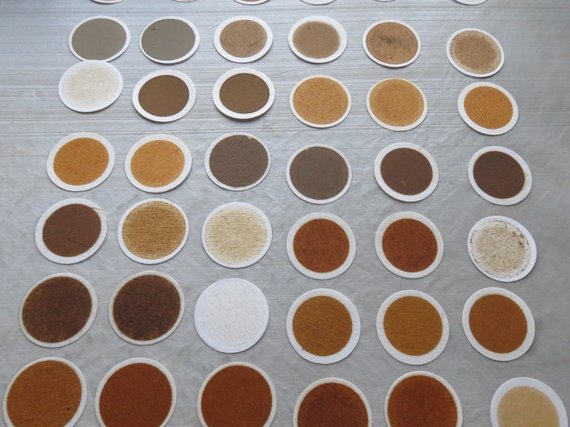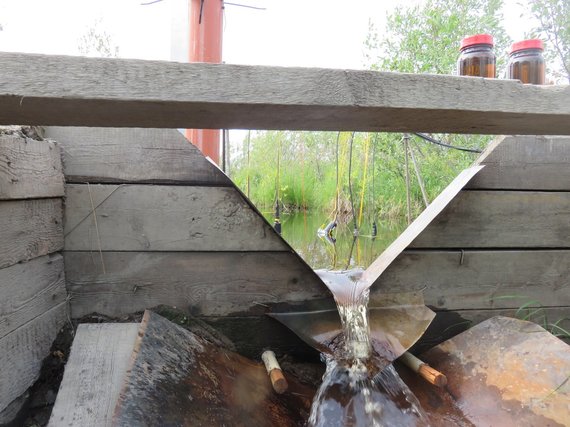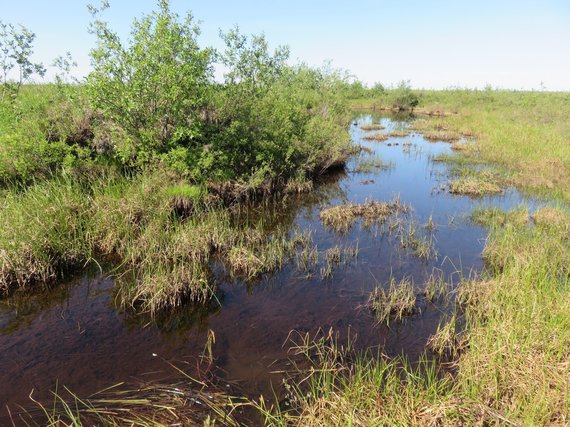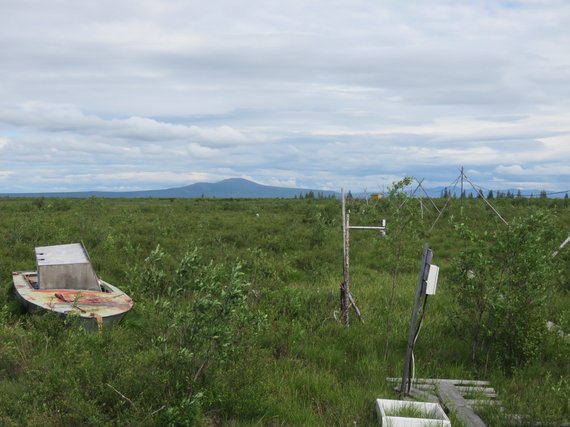Hydrology and carbon cycle processes at a permafrost site affected by drainage
Lead: Sandra Raab
Arctic permafrost soils store a huge amount of carbon (1300 PgC, Hugelius et al. 2014) that can be released when soils thaw. Permafrost ecosystems can experience severe changes due to global warming, including shifts in landscape morphology and hydrology. Such effects can have strong impacts on the transport and transformation of carbon and nutrients, and therefore also on their release into atmosphere, lakes and rivers. However, while many studies have evaluated vertical carbon release (e.g. CO2 and CH4), data on lateral water and carbon fluxes are very limited so far (Denfeld et al., 2013; Goeckede et al., 2017; Walvoord & Kurylyk, 2016; Woo et al., 2008).
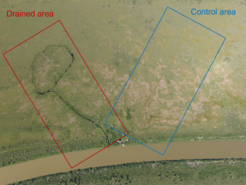
This project aims at characterizing and analyzing hydrological shifts and carbon patterns at a small-scale permafrost site near Chersky in Northeast Siberia (Ambolikha Site). At this site, in 2004 a drainage ring was constructed to study the effects of persistent drainage on hydrological and carbon release patterns. A nearby control area represents natural conditions for comparison purposes. We study the resulting changes in water distribution, suprapermafrost water flow and carbon transport pathways focusing on three main topics:
- Hydrological characterization and analysis of the drained and control area
- Lateral carbon export patterns within the water column of the drained and control area
- Total carbon budget at the drained area
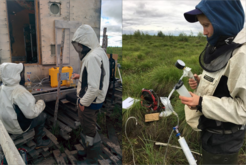
To address the first topic, the spatio-temporal variability of groundwater depth was monitored by an array of 33 piezometers distributed over both areas. Based on this information, water flow speed was calculated. Stable water isotopic (δ18O and δD) signatures improved the understanding of water distribution processes on site.
For investigating the second topic, from 2016 to 2018 we sampled water to gain information of the different carbon components in water (dissolved inorganic – DIC, dissolved organic – DOC, and particulate organic – POC), and how those were spatially distributed and changing with time. For a better comprehension of carbon production and transport mechanisms, we also sampled water for ∆14C-DOC, δ13C-DIC, δ13C-DOC and δ13C-CH4.
For the final quantification of lateral carbon exports through the drainage system (topic 3), we set up a weir near the drainage outlet to measure water and carbon fluxes. In 2016 and 2017, dissolved CO2 was automatically measured at this location, together with the amount of water draining into the nearby river. Additionally, we measured dissolved CO2 and CH4 on several days. We will combine this data with eddy covariance CO2 and CH4 fluxes to calculate a total budget of carbon export at a site with such drainage conditions.


